Roche Écrite was also featured in my previous blog, where I described my quest to find the Reunion Cockoo shrike, locally called tuit-tuit. This highly endangered bird is found exclusively on the forested flanks of Roche Écrite. Besides this rare endemic, most of the island's other endemic bird species live here too. The most notable is undoubtedly the tec-tec, or Reunion stonechat. This species is very similar to the European stonechat you might know, but has, among other things, a distinctive white eye stripe that gives the bird a somewhat sinister appearance—if, of course, a bird could actually seem frightening. This adorable creature is also the most common bird in the interior and has a nose for tourists. They are never far away when you take a break while walking!

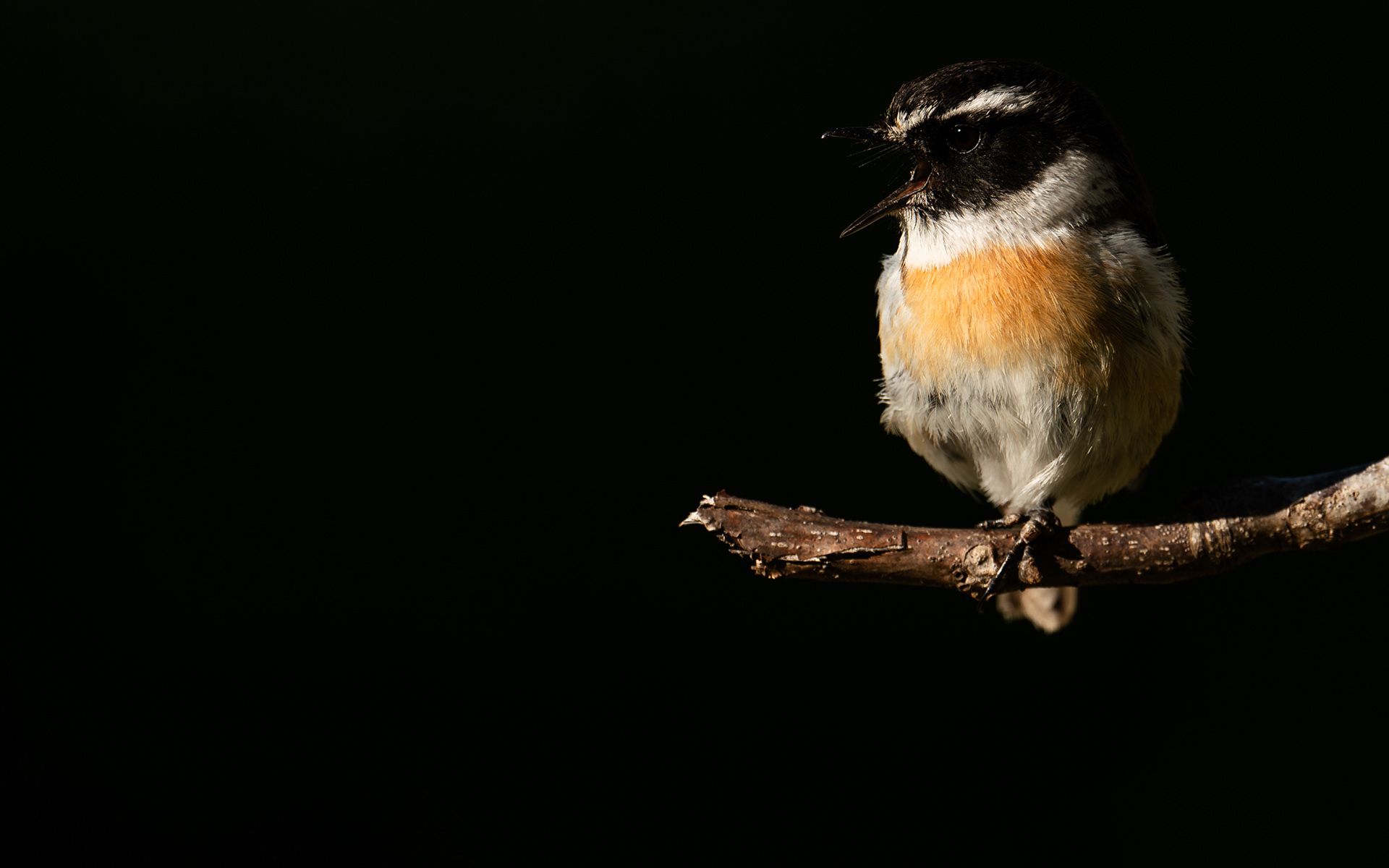
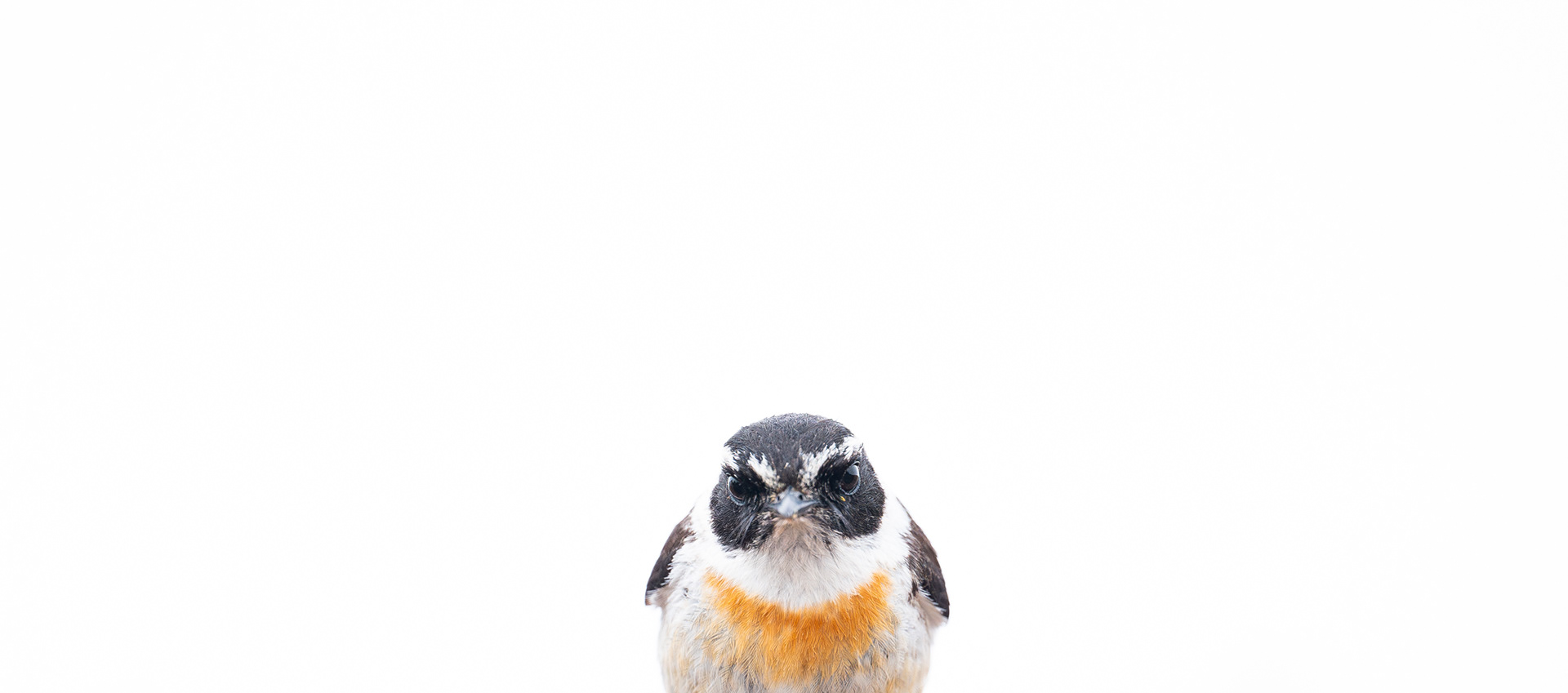
Roche Écrite certainly lives up to its name. Throughout history, the tradition arose of writing messages on the rocks, as a kind of signature indicating that you had reached the summit of this 2,276-metre high mountain. Nowadays, under increasing tourist pressure, this is discouraged. These messages are not the reason why so many people want to see this place; what matters to them is the breathtaking panorama- if you reach the summit in time. After 9 o’clock, the first clouds from the ocean start drifting into the valleys. As a result, Roche Écrite soon towers above the sea of clouds, and little of the 1,000-metre lower landscape remains visible.
I did not get to enjoy much of the promised views of the two cirque valleys of Salazie and Mafate, although I found that the landscape in the mist made the long walk more than worth it because reaching the summit is not a walk in the park.
The hike to the summit starts some 1,200 meters below, either at Camp Mamode or in the sleepy village of Dos D'Âne. From here, you hike through stunning forests up to a mountain hut. You pass beautiful tree ferns, meter-thick tamarins (did you know these trees belong to the clover family?!), and bamboo forests. And yes, all these tree species are endemic to this island!
Every 10 minutes, the vegetation changes dramatically. It's easy to forget to watch your step and risk tripping over the countless tree roots.
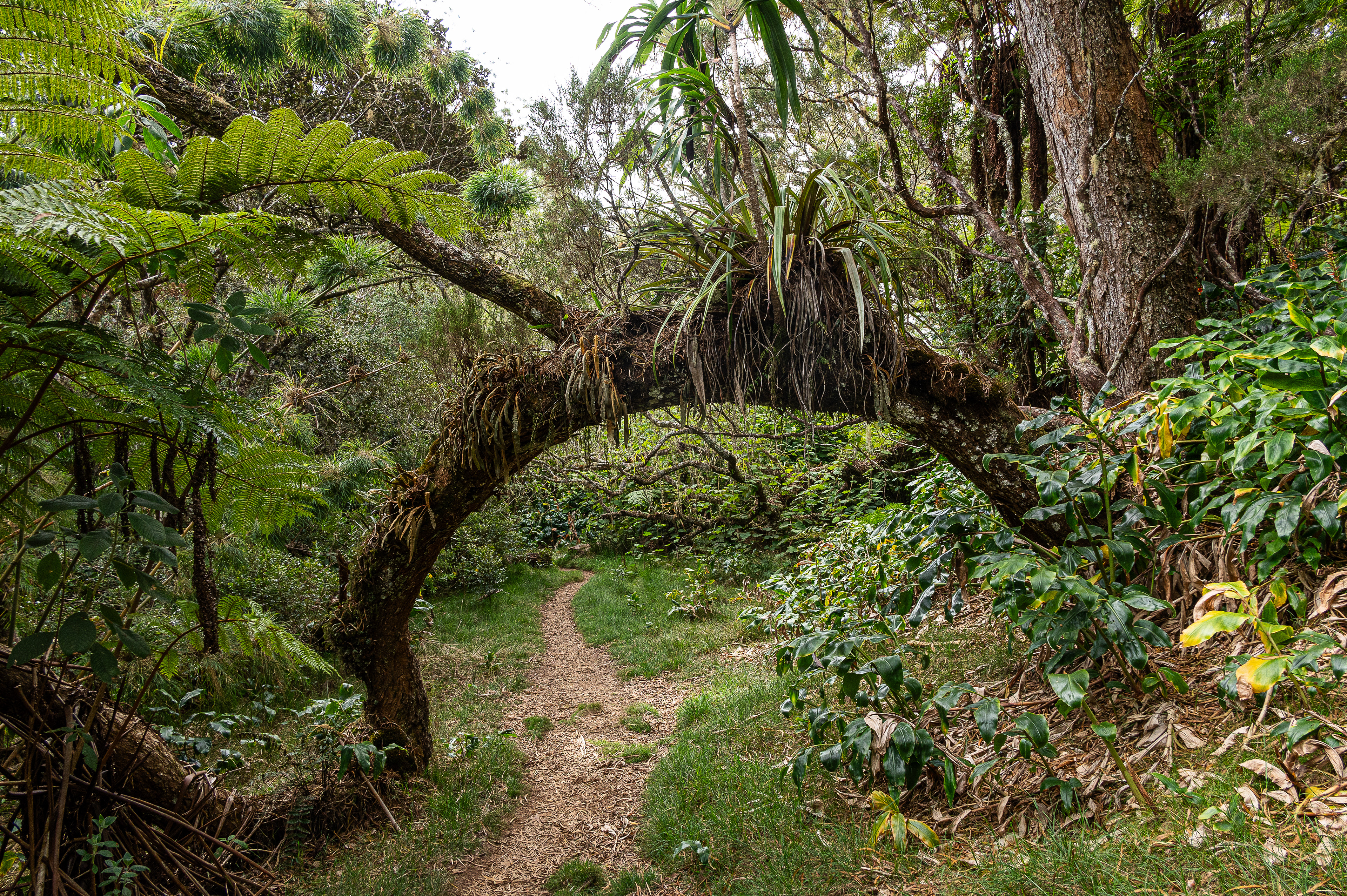
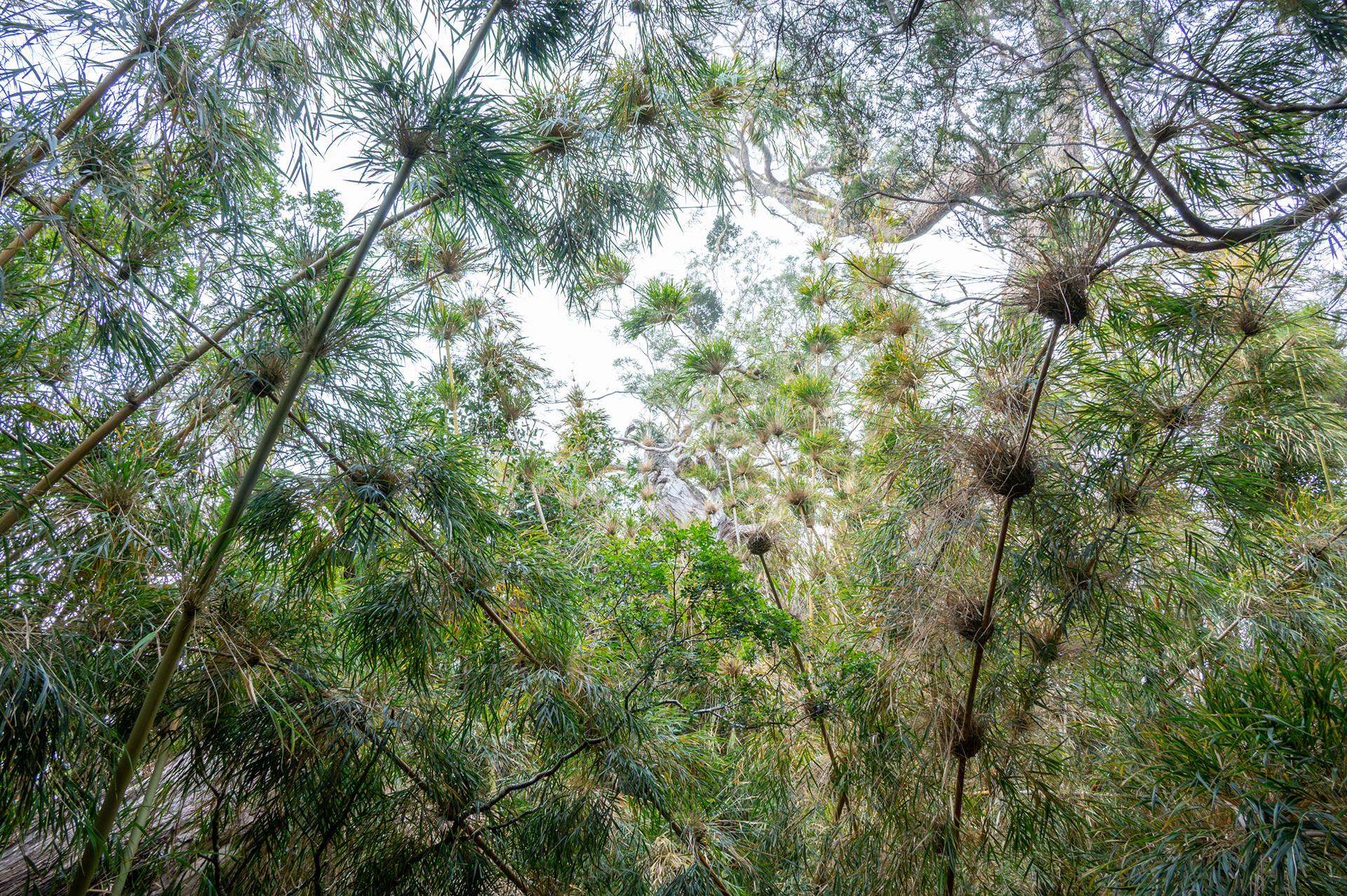
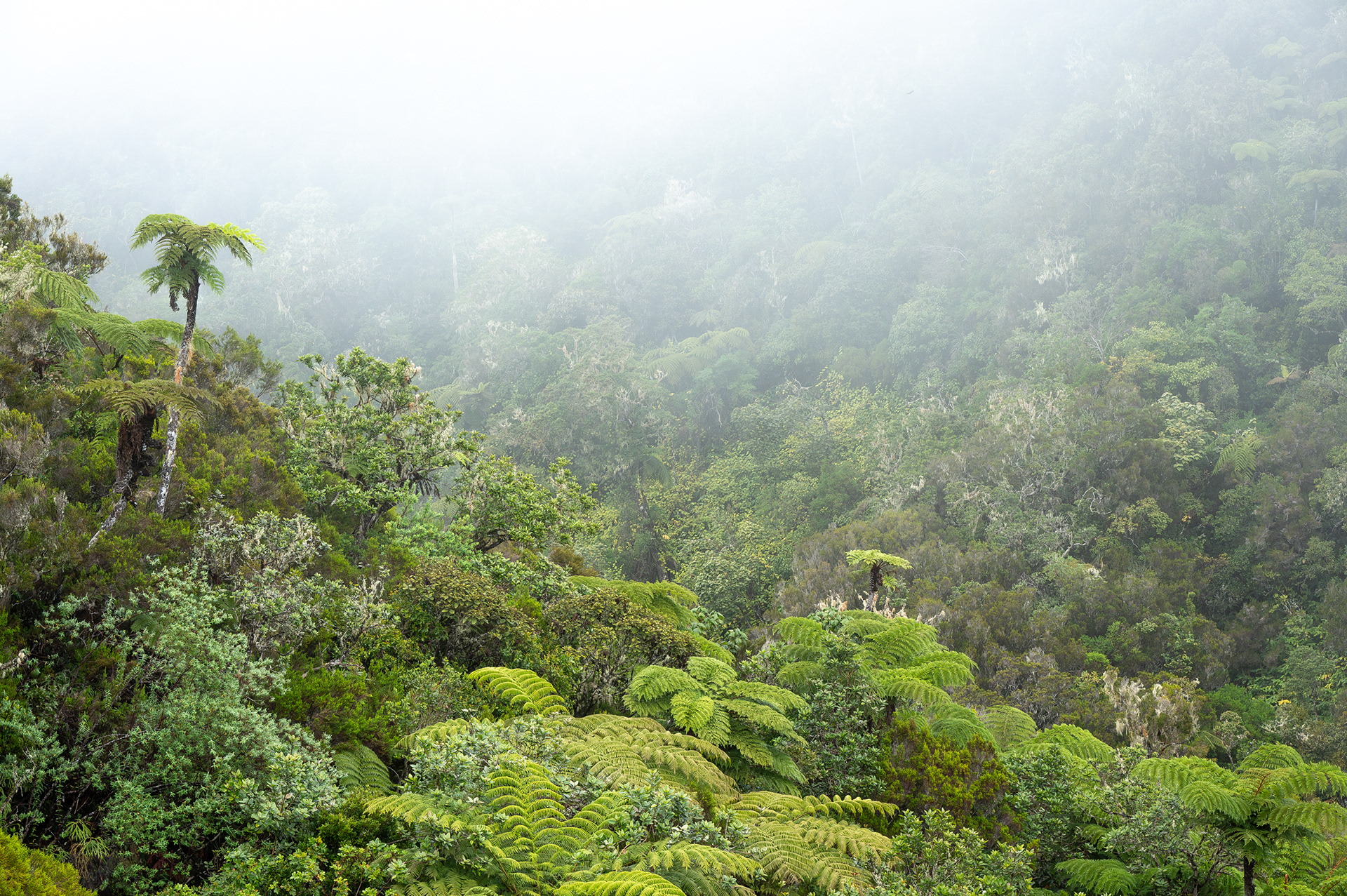
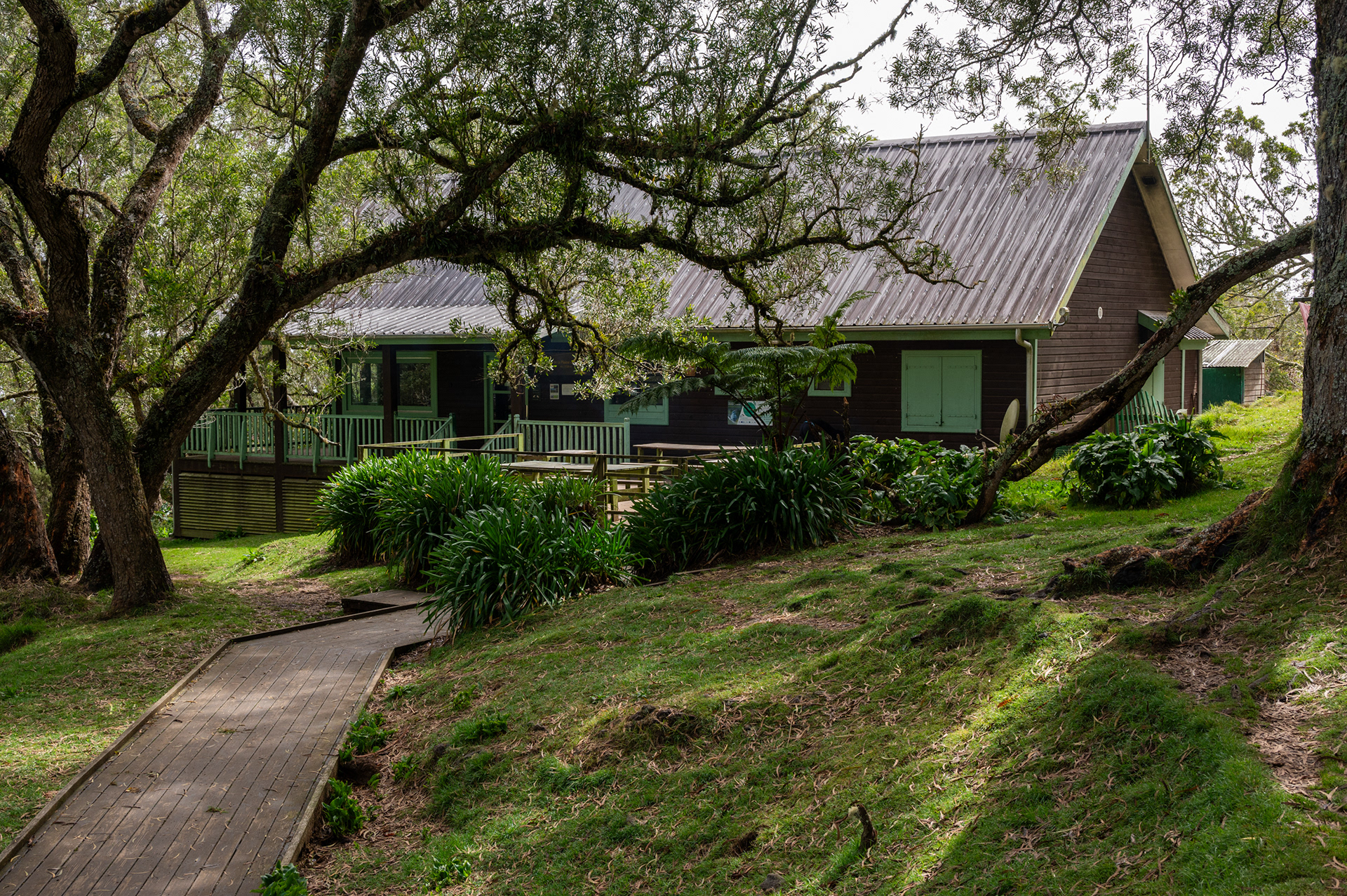
After the mountain hut, you reach the tree line and arrive at Plaine des Chicots, a plain full of meter-high heather bushes, with the occasional charismatic tree surviving in the harsh climate. The wind has free rein. One moment, you're scorching under the blazing sun; the next, you're drenched as a passing cloud engulfs you.
The desolation of this plain appealed to me immensely. I mostly walked around here surrounded by fog, which added an extra dimension to the landscape. That's the difference between photographers and tourists: one gets happy with clouds and fog, while the other prefers brilliant blue skies.
This plain was once populated by a herd of released Javan deer that kept things short, threatening a lot of local flora and fauna. Meanwhile, the population has been decimated to a few dozen. The only mammal I saw on this plain was an immense rat, another pest species.
These unruly shrubs grow slowly into striking shapes, their branches made even more charismatic when draped in a layer of moss.
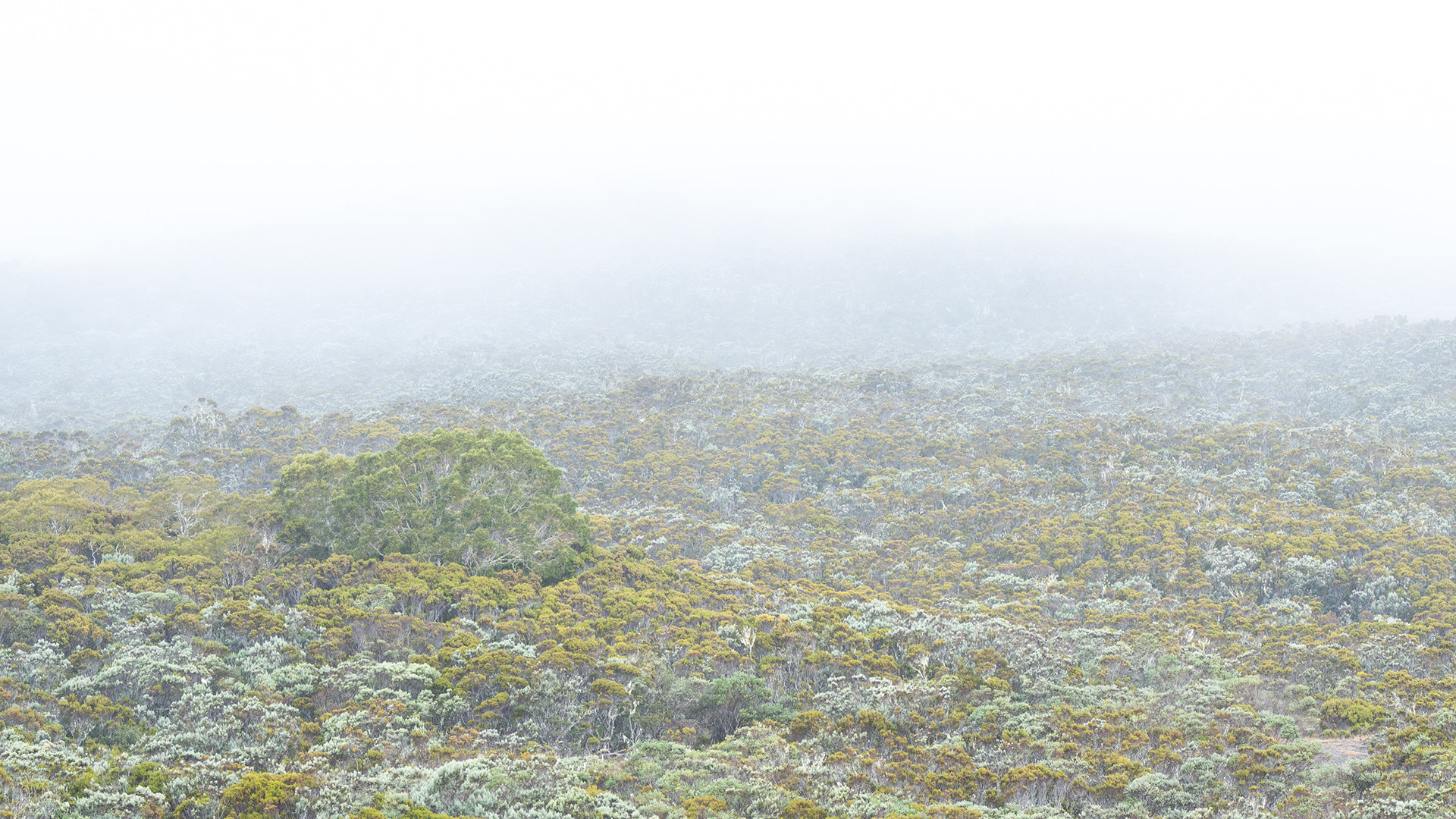


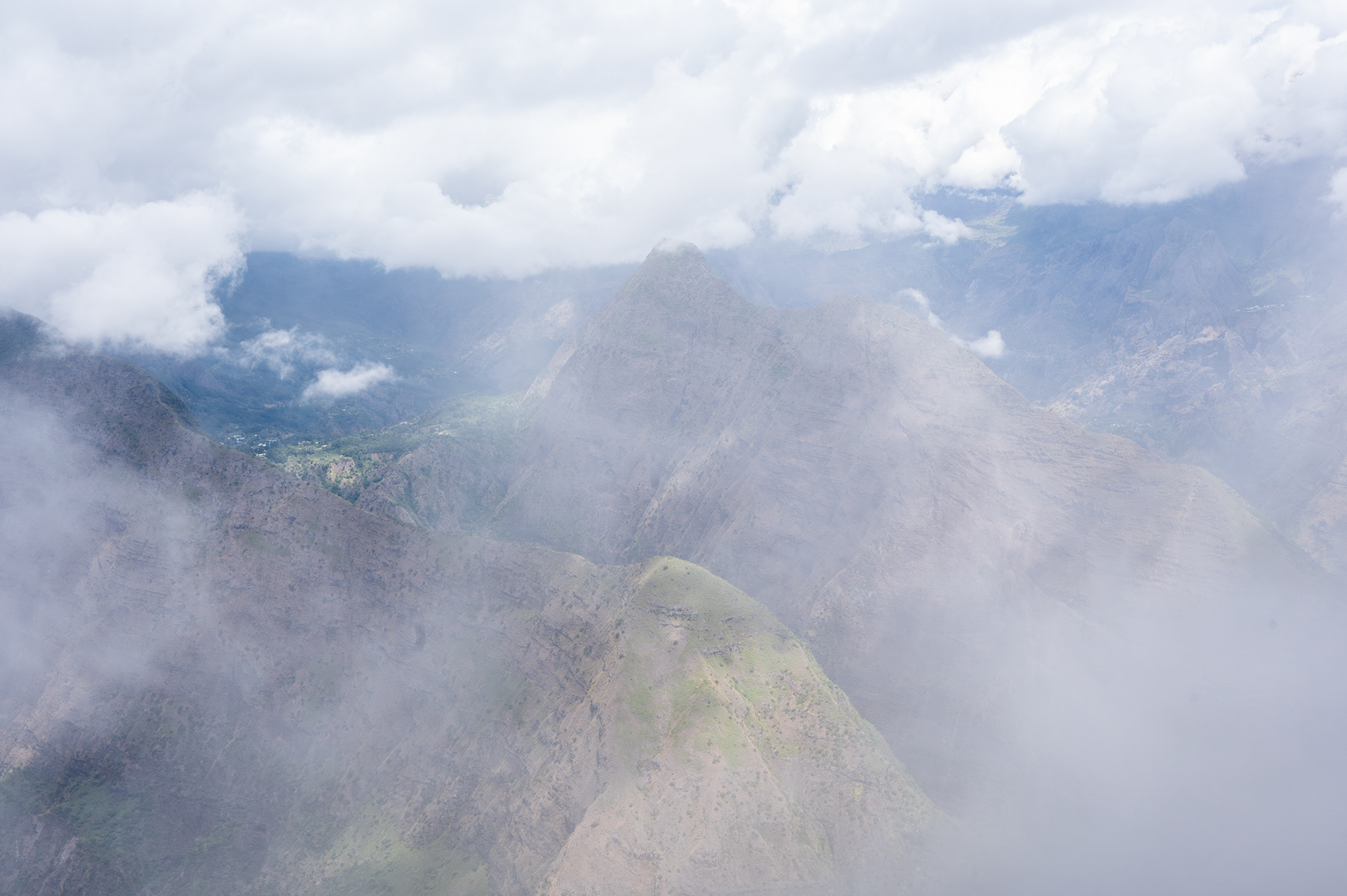
The last picture shows Cirque de Mafate, an inhospitable cirque that will be featured in the next part of the series, shimmering through the clouds drifting by...